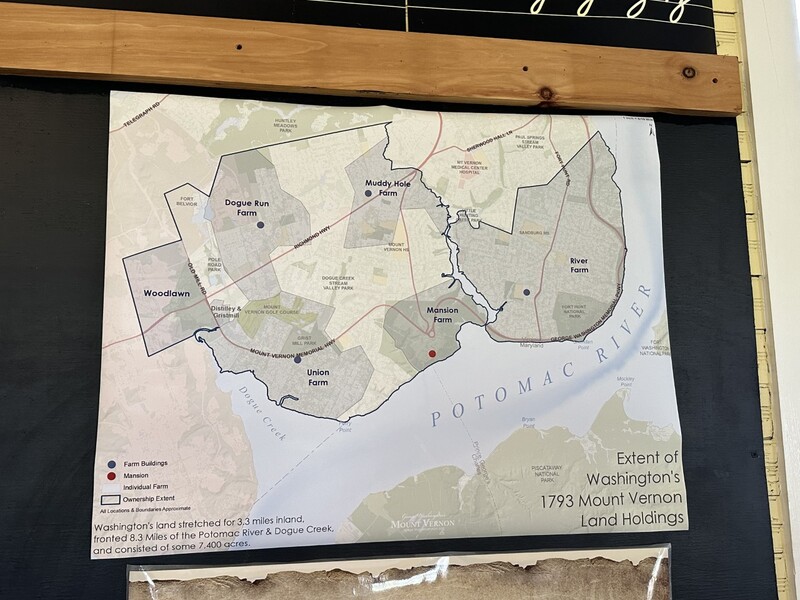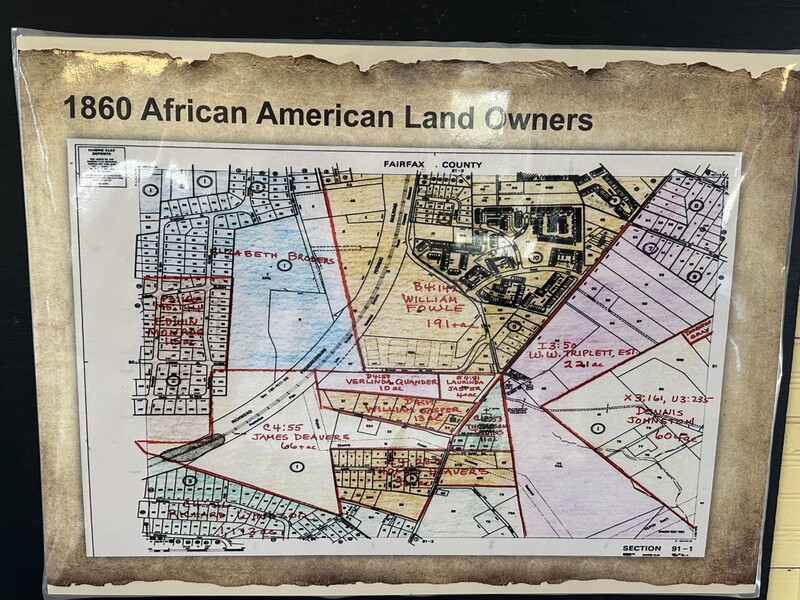A Brief History of Black Life in Franconia
Like other Black communities in Northern Virginia, including the neighboring community of Gum Springs, the community that built Laurel Grove School and Baptist Church had roots in the estates of Mount Vernon. Dick and Charity Jasper were enslaved on Dogue Run Farm, one of George Washington’s Mount Vernon landholdings. One of their six children, Morris, married a woman named Eliza, and had a son named William Jasper. While Dick, Charity, and their children were freed by George and Martha Washington in 1799, William Jasper and his mother remained enslaved by William Hayward Foote at Hayfield Plantation until 1846 when they were freed in Foote’s will.
Jasper was deeded thirteen acres by Thompson Javins in 1860. He was one of 66 African Americans that owned land in Fairfax County according to the 1860 Property Map shown below. There is not much known about him during the Civil War, but on December 9, 1869, William Jasper married Georgianna Jackson. They were key parts of this local Black community that also included the Baker, Carroll, Braxton, Gray, Kelly, and Harris families. Extended family units made up the communities at Franconia, and a neighboring community that came to be known as Carrolltown after its founder, George Carroll. After slavery, these extended family units were vital for Black Virginians to create something of their own and to freely worship, gather, and grow together.
In my interview with Phyllis Walker Ford, descendant of William and Georgiana, she told me a question she had always wondered about the people who were freed from local plantations like Mount Vernon or Hayfield: why did they stay in Northern Virginia where all that pain had occurred? We can imagine that some stayed because they were familiar with the land, or it was too expensive or burdensome to travel, or because it was where their families and loved ones were. For whatever reason, William and Georgianna Jasper, like many other formerly enslaved peoples in Northern Virginia, resisted the intended meaning of this land and these places and created new meaning by building lives and communities in these same areas. Therefore, the areas of Franconia, Gum Springs, Carrolltown, and several other sites were geographies of resistance and agency for free Black people in Northern Virginia during the latter half of the 19th century.[1]


